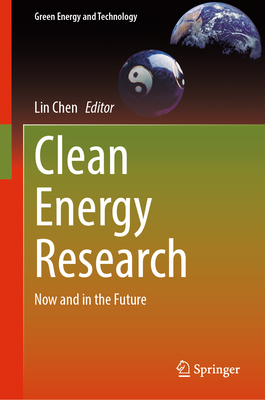Energy Management Strategies for Multi-Vectored Energy Hubs to Achieve Low Carbon Societies
暫譯: 多向能量樞紐的能源管理策略以實現低碳社會
Tiwari, Shubham
- 出版商: Wiley
- 出版日期: 2025-10-28
- 售價: $5,500
- 貴賓價: 9.5 折 $5,225
- 語言: 英文
- 頁數: 336
- 裝訂: Hardcover - also called cloth, retail trade, or trade
- ISBN: 1394267363
- ISBN-13: 9781394267361
-
相關分類:
控制系統 Control-systems
海外代購書籍(需單獨結帳)
商品描述
Comprehensive reference on multi energy hub (MEH) modeling, management, protection, and trading across energy exchange markets with supporting case studies
Energy Management Strategies for Multi-Vectored Energy Hubs to Achieve Low Carbon Societies discusses the complex exchange process across different sources within an evolving set of technologies, presenting multi-vectored energy hub (MV-EH) modeling techniques and associated energy management strategies for their network architecture. This includes in-depth assessments of advanced energy conversion technologies, market mechanisms, and transactive energy management to ensure robust and flexible energy-sharing mechanisms. The book focuses on renewable energy integration in MV-EHs, advanced energy storage, and advance energy conversion technologies.
Later chapters cover detailed analyses of Power-to-X (P2X) technologies, bioenergy integration, and emerging challenges in high-renewable penetration in energy hubs. Case studies of MV-EHs explore the latest advancements such as the carbon tax mechanism, carbon trading strategies, the role of hydrogen generation, and carbon storage to enhance MV-EH performance. Readers will find insights into the integration of carbon reduction techniques (CDR) and emission trading mechanisms, along with the role of bioenergy in building the low emission energy systems. Mathematical models of various new energy conversion systems such as power to gas (P2X), hydrogen storage, and hydrogen usage are also explored.
Edited by a team of highly qualified authors, this book covers additional topics such as:
- Types of frameworks to manage network energy hubs, cooperative and non-cooperative strategies, and centralized, decentralized, and distributed system architectures
- Advanced energy conversion units such as electric heat pumps, combined heat and power units, gas boilers, absorption chillers, electric chillers, and energy storage units
- The role of bioenergy, power-to-X, hydrogen, carbon reduction techniques (CDR), carbon taxes, carbon market, and trading strategies in achieving low energy systems
- Technologies to enhance flexibility in MEHs such as electrical, heating, cooling, and community demand response programs
- The impact of high or full share of renewables and load-side uncertainties on MV-EH operations
Delivering a thorough understanding of networked multi-vectored energy systems, and their role in sustainable energy transitions, Energy Management Strategies for Multi-Vectored Energy Hubs to Achieve Low Carbon Societies is an essential reference for engineers, researchers, and graduate students developing energy systems, smart grids, and decarbonization strategies.
商品描述(中文翻譯)
多能量樞紐(MEH)建模、管理、保護及交易的綜合參考,並附有案例研究
多向能量樞紐的能源管理策略以實現低碳社會 討論了在不斷演變的技術組合中,不同來源之間的複雜交換過程,呈現多向能量樞紐(MV-EH)建模技術及其網絡架構的相關能源管理策略。這包括對先進能源轉換技術、市場機制及交易能源管理的深入評估,以確保穩健且靈活的能源共享機制。本書專注於MV-EH中的可再生能源整合、先進能源儲存及先進能源轉換技術。
後面的章節涵蓋了對Power-to-X(P2X)技術、生物能源整合及在能源樞紐中高可再生能源滲透所面臨的新挑戰的詳細分析。MV-EH的案例研究探討了最新的進展,例如碳稅機制、碳交易策略、氫氣生成的角色及碳儲存,以提升MV-EH的性能。讀者將獲得有關碳減排技術(CDR)及排放交易機制整合的見解,以及生物能源在建構低排放能源系統中的角色。各種新型能源轉換系統的數學模型,如電力轉氣(P2X)、氫氣儲存及氫氣使用也將被探討。
本書由一組高素質的作者編輯,涵蓋了其他主題,例如:
- 管理網絡能量樞紐的框架類型、合作與非合作策略,以及集中式、分散式和分佈式系統架構
- 先進的能源轉換單元,如電熱泵、聯合熱電單元、燃氣鍋爐、吸收式冷卻器、電冷卻器及能源儲存單元
- 生物能源、電力轉X、氫氣、碳減排技術(CDR)、碳稅、碳市場及交易策略在實現低能量系統中的角色
- 增強MEH靈活性的技術,如電力、供熱、冷卻及社區需求響應計劃
- 高或完全可再生能源比例及負載側不確定性對MV-EH運作的影響
多向能量樞紐的能源管理策略以實現低碳社會 提供了對網絡多向能源系統及其在可持續能源轉型中角色的透徹理解,是工程師、研究人員及開發能源系統、智慧電網及脫碳策略的研究生的重要參考資料。
作者簡介
Shubham Tiwari is a Research Scholar at the International Institute of Applied Systems Analysis (IIASA), Austria.
Jai Govind Singh, PhD, is an Associate Professor in Sustainable Energy Transition at the Asian Institute of Technology, Pathum Thani, Thailand.
Sivaraman Palanisamy is an industry professional and also a Research Scholar with the Department of Electrical and Electronics Engineering at CEG Campus, Anna University, Chennai.
Sharmeela Chenniappan, PhD, holds the post of Professor in the Department of Electrical and Electronics Engineering. She is also Adjunct Professor at the Centre of E-Vehicle Technologies, and the Centre for Energy Storage Technologies, CEG Campus, at Anna University, Chennai, India.
Rupendra Kumar Pachauri, PhD, is an Associate Professor in the Electrical Cluster, School of Advanced Engineering, UPES, Dehradun, India.
Sanjeevikumar Padmanaban, PhD, is a faculty member with the Department of Electrical Engineering, IT and Cybernetics at the University of South-Eastern Norway, Porsgrunn, Norway.
作者簡介(中文翻譯)
Shubham Tiwari 是奧地利應用系統分析國際研究所 (IIASA) 的研究學者。
Jai Govind Singh 博士是泰國帕府亞洲科技大學可持續能源轉型的副教授。
Sivaraman Palanisamy 是一位業界專業人士,同時也是印度清奈安娜大學電氣與電子工程系的研究學者。
Sharmeela Chenniappan 博士擔任電氣與電子工程系的教授。她同時也是印度清奈安娜大學電動車技術中心及能源儲存技術中心的兼任教授。
Rupendra Kumar Pachauri 博士是印度德拉敦UPES高級工程學院電氣集群的副教授。
Sanjeevikumar Padmanaban 博士是挪威東南大學 (University of South-Eastern Norway) 電氣工程、資訊科技與控制論系的教職員。






























